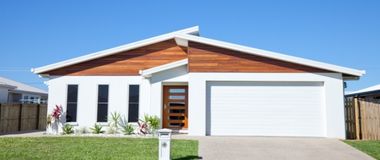Claiming depreciation on a new investment property – Maximise your tax savings

First published 25 February 2025
Investing in a newly built investment property comes with a range of financial advantages, with tax depreciation being one of the most significant. For property investors, claiming depreciation on a new investment property can lead to substantial tax savings and improved cash flow.
In this article, we'll explore the benefits of depreciation, how it applies to newly built investment properties, the key differences between old and new properties, and the steps investors can take to maximise their claims.
Understanding property depreciation
Property depreciation refers to the natural wear and tear of a building and its assets over time. The Australian Tax Office (ATO) allows property investors to claim depreciation as a tax deduction, helping to offset taxable income and improve financial returns.
Depreciation is divided into two key categories:
- Capital works deductions (Division 43): This relates to the depreciation of the building’s structure and permanent fixtures, such as walls, floors, roofing, and built-in cabinetry. New residential properties typically allow investors to claim 2.5% of the construction cost per year for up to 40 years.
- Plant and equipment depreciation (Division 40): This applies to removable and mechanical assets within the property, such as air conditioners, carpets, blinds, hot water systems, and appliances. The depreciation rate varies depending on the asset’s effective lifespan.
New properties tend to offer higher depreciation deductions compared to older properties, making them an attractive option for investors looking to maximise tax benefits.
Why new properties offer more depreciation benefits
When it comes to claiming depreciation, new properties have a clear advantage over older properties. Here’s why:
Higher plant and equipment depreciation
- New kitchen appliances
- Air conditioning units
- Carpets and blinds
- Security systems
Full 40-year capital works deductions
Boosting cash flow and tax benefits
Comparing depreciation for new vs. old properties
Table 1. Comparing depreciation for new vs. old properties
| Factor | New investment property | Old investment property |
| Capital works deductions | Full 40-year claim available | Only remaining years can be claimed |
| Plant & equipment depreciation | Can claim depreciation on new assets | Cannot claim on previously used assets |
| Tax savings potential | Higher depreciation benefits | Lower depreciation benefits |
| Purchase price | Generally higher due to new build | Often lower compared to new properties |
| Maintenance costs | Lower due to new construction | Higher due to ageing assets |
| Opportunity for renovation deductions | Limited, as property is new | More opportunities to add and depreciate improvements |
Table 2. Typical deductions found on both new and second-hand properties
| BMT deductions assessment | ||||
| Purchase price | Year 1 depreciation | Year 1-5 cumulative depreciation |
Average annual cash return* | |
| New unit | $760,000 | $15,856 | $68,824 | $5,093 |
| Second-hand unit (2005) | $738,000 | $7,560 | $37,800 | $2,797 |
| New 4BR house | $879,000 | $16,795 | $70,502 | $5,217 |
| Second-hand 4BR house (2005) | $825,000 | $9,260 | $46,300 | $3,426 |
The properties in this table all exchanged contracts after 7.30pm on 9 May 2017.
Depreciation deductions are calculated using the diminishing value method.
*First five years, calculated on a 37 per cent tax rate.
Are there any downsides to buying new for depreciation?
While new properties provide higher depreciation benefits, there are a few factors investors should consider:
1. Higher purchase prices
New properties typically come at a higher price point than older properties in the same location. While depreciation can help offset some of the costs, investors should assess their overall budget and expected rental returns.
2. Strata and maintenance fees
Many new properties, particularly in apartment complexes, come with higher strata fees due to shared amenities like gyms, pools, and elevators. While depreciation helps with tax savings, ongoing costs should also be factored into the investment decision.
3. Limited scope for value-adding improvements
Older properties provide opportunities for renovations that can increase value and rental appeal. While new properties are move-in ready, investors may have fewer opportunities to enhance capital growth through property improvements.
4. Potential market risks
In some cases, newly built properties in high-density areas may face slower capital growth due to oversupply. Investors should research market conditions, demand, and location trends before purchasing a new property.
How to optimise claiming depreciation on a new investment property
To ensure you claim the maximum depreciation deductions on your new investment property, follow these steps:
1. Get a tax depreciation schedule
A tax depreciation schedule is essential for maximising your claims. A qualified quantity surveyor, such as BMT Tax Depreciation, will inspect your property and prepare a detailed report outlining the depreciation deductions available. This report helps ensure that you claim every eligible deduction and comply with ATO requirements.
2. Claim both capital works and plant & equipment deductions
Many investors overlook plant and equipment deductions, which can significantly increase depreciation claims. Ensure your depreciation schedule includes all eligible assets, from flooring to kitchen appliances.
3. Use deductions to improve cash flow
Depreciation reduces your taxable income, meaning you pay less tax and keep more of your rental earnings. These savings can be used to reduce loan repayments, reinvest in another property, or cover property-related expenses.
4. Stay updated on depreciation rules
Tax laws and depreciation regulations can change, impacting what you can claim. Consulting with a tax professional or quantity surveyor helps ensure you stay compliant and maximise your deductions.
The bottom line
So, is a new investment property worth it for depreciation?
For investors looking to maximise tax deductions and cash flow, claiming depreciation on a new investment property offers a significant advantage. With full capital works deductions, higher plant and equipment claims, and long-term tax benefits, new properties can provide substantial financial rewards.
However, investors should weigh the benefits against higher purchase costs, strata fees, and market risks. Conducting thorough research, seeking professional advice, and obtaining a comprehensive tax depreciation schedule are key steps to ensuring the best financial outcome.
By leveraging depreciation effectively, investors can optimise returns and build a stronger property portfolio over time.
Need a tax depreciation schedule?
If you’re considering investing in a new property, ensure you’re maximising your tax benefits with a professionally prepared tax depreciation schedule. Contact BMT Tax Depreciation today on 1300 728 726 or Request a Quote to get started!
Connect with us
Stay up to date
Subscribe to receive the latest
BMT news and announcements.





